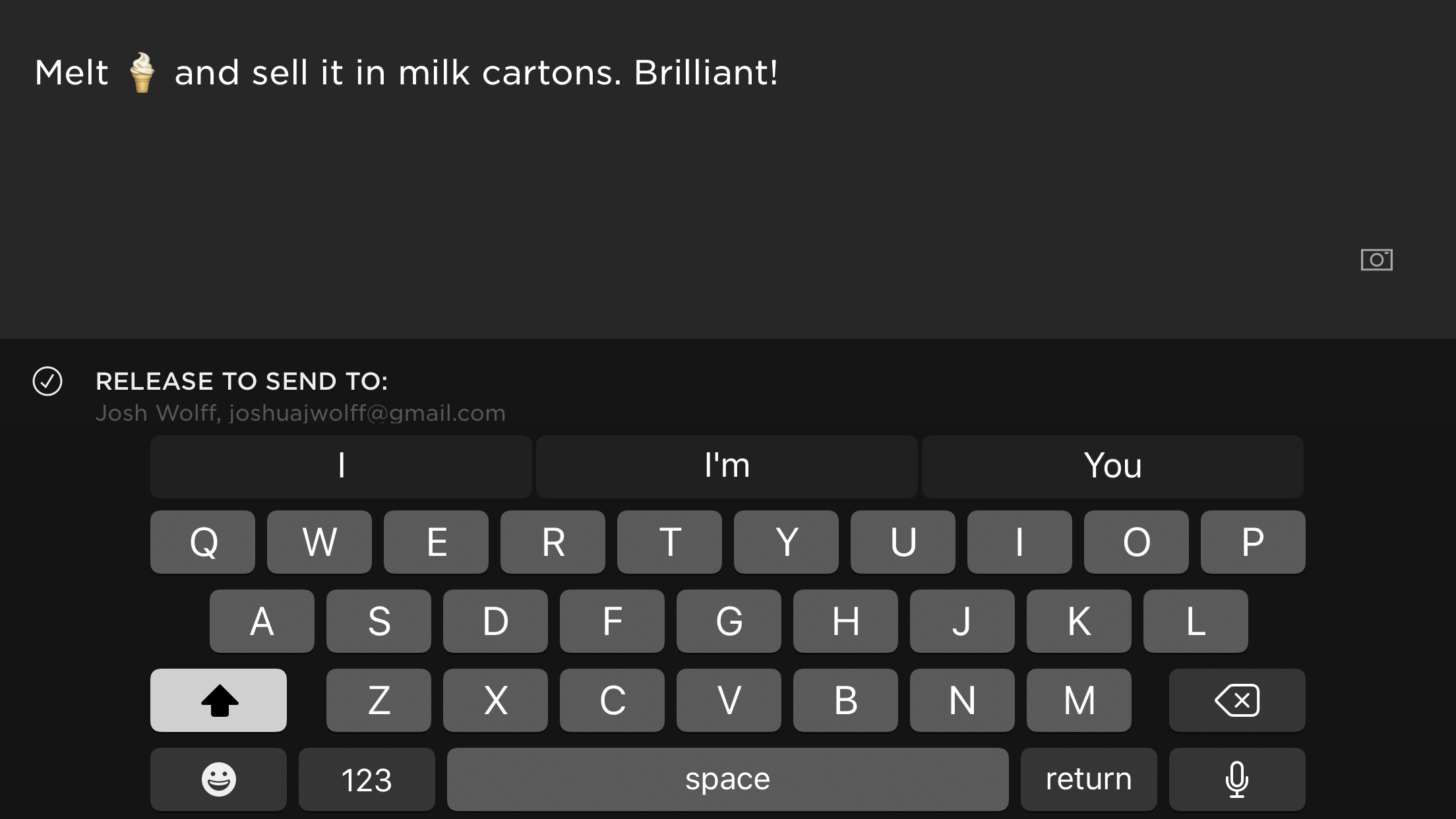These Three Things: How I Capture Thoughts and Ideas
If your brain is anything like mine –a bustling sci-fi spaceport of random and actionable thoughts, narrowly avoiding collision– you may benefit from a workflow designed to capture the best pieces your mind offers up.
These three things have helped me lock down ideas, thoughts, and personal breakthroughs for the easiest recall and actionability.
Don't even think about stealing this one.
Squarespace Note
For years, I scribbled every thought into Moleskins, notebooks, and notepads. This often created a “what now” scenario, where recall of those notes was dependent on legibility and organization of information across static pieces of paper.
Mobile device note-taking offers three advantages: immediacy, legibility, and backup. This is why I use Squarespace Note, and why it enjoys exclusive status on my four-app iPhone home screen dock.
Note opens into a simple, plain-text screen where you can bang out your thought, swipe up, and find it in one of five places: your email inbox, a Google Doc, Dropbox, Evernote, or a Squarespace blog post draft. Each is customizable as a default sending location, and offers additional options like subject, body, and location data inclusion.
I prefer to capture data in Google’s Sheets (see below) so I’d love the option for Note to create new rows. The important part, however, is that with a single swipe there’s no worry that I’ll lose my next great idea to the ether.
It's important to be polite when talking to yourself.
Google Forms / Sheets
For organizational purposes, I prefer bucketing my ideas and thoughts into easily filterable data sets. While they’re not as quick as Note, the combination of Google Forms and Sheets are a more powerful way to segment and bank ideas.
I start by creating a Google Form with a drop down to separate ideas by a single, high level category. I then add a paragraph field so I have room to expand on the details around the idea. The option to create a unique Google spreadsheet where ideas land seals the deal. Taking it one nerdy step further, I use SQL inside of Sheets to pull data into bucketed sub-sheets.
The categories I use are closely associated with my creative output. “Blog Posts” is self-explanatory. “Music” is for lines or verses of lyrics, or conceptual song ideas. “Words” is for sentences I think sound cool, or paragraphs to be inspired by. “Screenplay”, “Web App”, and “Book” are for the big ideas and starting points I can trial as major creative projects. There are many more, but giving these ideas context helps me suss out the original purpose of why I banked them.
I use this workflow primarily on a desktop experience, and have the forms and response sheets readily available in my Chrome Bookmarks Bar. It takes less than a minute to go from thought to organized idea using this method.
Well, journaling was a good idea while it lasted...
Pocket App
Often times, our best ideas or “a-ha” moments begin with inspiration from others. If you chug content like its $1 pitcher night at your local dive bar, Pocket’s mobile app and Chrome extension experiences will elevate your binge to top-shelf sips.
I try to browse content from sources that interact seamlessly with Pocket. Feedly helps me aggregate content into topic folders, and its mobile app lets me long-press articles straight to Pocket. To keep my Reddit exposure to an absolute minimum (seriously, it’s digital cocaine), I use IFTTT to push “saved” Reddit posts directly to Pocket. If I’m browsing the old fashioned way, the Pocket Chrome extension is a “one-click and forget it solution” to store the article for later reading or recall.
To get the most out of Pocket, it’s important to be diligent about tagging your archived content. I use “ideas” or “inspiration” tags to remind me about posts related to actionable ideas. Otherwise, I use the same tagging hierarchy as the forms above to minimize content clutter.
What Helps You Capture Ideas?
Allegedly, we’re inundated with tens of thousands of thoughts a day. Nudging your best mind-nuggets toward actionability can lead to significant personal or professional breakthroughs. The idea for this post started in Squarespace Note a couple years ago, and finally made its way through my capture and action funnel. Think of your banked ideas as long-term investments.
Is there a must-know method you use to capture ideas or random thoughts? Share with the class in the comments below!
--



